The 2007 Southeast Asian Games in Nakhon Ratchasima, Thailand

 |
| GMA: The Official Network banner for the 2007 SEA Games |
.jpg)
 |
| Arnold Clavio and Jessica Soho anchored the papal visit coverage in January 1995 and January 2015. |
.jpg) |
| GMA's 1992 logo without the words "Rainbow Satellite" |

- GMA-7 Manila
- TV-7 Batanes
- TV-5 Laoag
- TV-48 Vigan
- TV-7 Abra
- TV-11 La Union
- TV-7 Tuguegarao
- TV-13 Aparri
- TV-30 Apayao
- TV-9 Kalinga
- TV-5 Mountain Province
- TV-7 Santiago, Isabela
- TV-13 Cauayan, Isabela
- TV-21 Ilagan, Isabela
- TV-5 Bayombong
- TV-12 Quirino
- TV-10 Baguio
- TV-10 Dagupan
- TV-5 Baler
- TV-7 Cabanatuan
- TV-35 Llanera
- TV-10 Olongapo
- TV-5 Botolan
- TV-14 Iba
- TV-10 Pampanga
- TV-48 Tarlac
- TV-3 Bagac
- TV-27 Balanga
- TV-30 Angat
- TV-46 Malolos
- TV-26 Obando
- TV-12 Batangas
- TV-26 Tagaytay
- TV-15 Lucena
- TV-48 Patnanungan
- TV-23 Calamba
- TV-26 San Pablo
- TV-44 Jalajala, Rizal
- TV-13 Occidental Mindoro
- TV-11 Bongabong, Oriental Mindoro
- TV-13 Boac, Marinduque
- TV-5 Santa Cruz, Marinduque
- TV-10 Torrijos, Marinduque
- TV-12 Puerto Princesa, Palawan
- TV-6 Brooke’s Point, Palawan
- TV-8 Coron, Palawan
- TV-17 Cuyo, Palawan
- TV-13 Balabac, Palawan
- TV-7 Romblon
- TV-7 Masbate
- TV-7 Naga
- TV-8 Malilipot
- TV-12 Legazpi
- TV-13 Catanduanes
- TV-2 Sorsogon
- TV-8 Daet
- TV-5 Calbayog
- TV-9 Catarman
- TV-11 Catubig
- TV-13 Catbalogan
- TV-8 Borongan
- TV-35 Naval, Biliran
- TV-10 Tacloban
- TV-12 Ormoc
- TV-44 Maasin
- TV-2 Kalibo
- TV-35 Malay, Aklan
- TV-12 San Jose, Antique
- TV-35 Culasi, Antique
- TV-5 Roxas
- TV-6 Iloilo
- TV-9 Guimaras
- TV-13 Bacolod
- TV-23 Bais
- TV-5 Cadiz
- TV-30 Murcia, Negros Occidental
- TV-7 Cebu
- TV-26 Bogo
- TV-11 Samboan
- TV-11 Bohol
- TV-5 Dumaguete
- TV-11 Guihulngan
- TV-48 Siquijor
- TV-10 Sipalay
- TV-41 Mambajao
- TV-35 Cagayan de Oro
- TV-30 Gingoog
- TV-12 Bukidnon
- TV-4 Dipolog
- TV-34 Oroquieta
- TV-5 Ozamiz
- TV-3 Pagadian
- TV-11 Iligan
- TV-26 Butuan
- TV-10 Surigao
- TV-2 Tandag
- TV-35 Bislig
- TV-3 Prosperidad, Agusan del Sur
- TV-5 Davao
- TV-44 Tagum
- TV-35 Panabo
- TV-3 Digos
- TV-13 Malita
- TV-21 Baganga
- TV-48 Mati
- TV-30 Nabunturan
- TV-6 Kidapawan
- TV-12 Cotabato
- TV-13 Marawi
- TV-8 General Santos
- TV-13 Koronadal
- TV-30 Tacurong
- TV-2 Ipil
- TV-30 Imelda, Zamboanga Sibugay
- TV-9 Zamboanga
- TV-12 Jolo
- TV-44 Tawi-Tawi


_page-0002.jpg)
_page-0003.jpg)










 |
| Noontime habits. Eat Bulaga! hosts Tito Sotto, Vic Sotto, and Joey de Leon, the Sexbomb dancers, EB! directors Bert de Leon and Poochie Rivera, and EB! producers Grace Esquillon and Malou Choa-Fagar. Feature from YES! magazine, 2003 |
 |
| Eat Bulaga! hosts Tito Sotto, Vic Sotto and Joey de Leon. |


 |
| Eat Bulaga! dabarkads |
 |
| EAT BULAGA! 23rd anniversary photoshoot with then-hosts: Paolo Ballesteros, Toni Gonzaga, Janno Gibbs, Ruby Rodriguez, Leila Kuzma, Anjo Yllana, Jimmy Santos, Joey de Leon, Vic Sotto, Jose Manalo, Wally Bayola, Toni Rose Gayda, Nadine Schmidt, Gladys Guevarra, Francis M. Not in photo: Allan K, who was in Australia at the time of the shoot. Photographed by Rene Mejia for YES! Magazine, 2002 |



 |
| Alden Richards and Maine Mendoza |



free-to-air television network ABS-CBN, along with UHF free-to-air television network Studio 23 and cable and satellite sports television channel Balls, aired the countdown plugs and teasers for the live nationwide and worldwide coverage of the 24th Southeast Asian Games in Nakhon Ratchasima, Thailand, from December 6 to 15, 2007. This coverage was particularly significant, considering the Southeast Asian Games are a biennial multi-sport event that features athletes from across the region, showcasing not just competitive spirit but also fostering camaraderie and cooperation among Southeast Asian nations. The event served as a critical platform for athletes to demonstrate their hard work, dedication, and talent on a larger stage, while simultaneously promoting cultural exchange and unity.
ABS-CBN, as one of the leading media networks in the Philippines, took on the responsibility of delivering comprehensive coverage of these games, ensuring that fans could engage with events as they unfolded, from the opening ceremonies to the culminating award presentations. By airing live telecasts, the network made it possible for those who could not attend in person to share in the thrill and excitement, effectively bridging the gap between athletes and viewers. This initiative harnessed the power of media to not only entertain but also educate audiences about the significance of sporting events in the context of national pride and athletic excellence.
The decision to air teasers and countdown plugs was strategic and aimed at building anticipation among the audience. Creating engaging promotional materials was essential to draw in viewers, encouraging them to tune in and support their favorite athletes and teams. These promotional efforts were carefully crafted to highlight the various sports included in the games, from traditional events that have a rich history in the region to newer sports that might attract a younger audience. The countdown to the event was an opportunity for the network to showcase the spirit of competition, dedication, and sportsmanship that characterizes the Southeast Asian Games.
Studio 23, as another channel under the ABS-CBN banner, complemented the coverage by focusing on more niche programming related to the Southeast Asian Games. This included athlete profiles, interviews, and discussions about the significance of various sports disciplines in the region. Showcasing stories of individual athletes not only humanized the competition but also inspired viewers, especially the youth, to pursue their passions in sports. The coverage encouraged a sense of pride and fostered a positive atmosphere that brought people together, regardless of their backgrounds.
Additionally, the introduction of the Balls channel, dedicated explicitly to sports coverage, marked a pivotal shift in how sports programming was delivered to Filipino audiences. The channel’s commitment to highlighting various sporting disciplines and events ensured that fans could immerse themselves in the athleticism displayed during the Southeast Asian Games. This focus signaled a growing recognition of the importance of sports as a cultural touchstone and a unifying force within the nation. Viewers were provided with expert commentary and analysis from sports figures, which enhanced their understanding of the games and further engaged them in the events.
The 24th Southeast Asian Games upheld the tradition of promoting regional solidarity, showcasing talents, and boosting tourism in host countries. In a broader context, sports events like these also stimulate economic activity, drawing in visitors, sponsors, and media attention, creating a ripple effect that benefits the local economy in more ways than one. The enthusiastic coverage by networks such as ABS-CBN and its affiliates created a vibrant atmosphere, thus contributing to the overall success and impact of the games.
Broadcasting such a significant event required tremendous coordination and effort from all parties involved. From the sports anchors and commentators preparing for live reporting to the technical teams behind the scenes ensuring seamless transmission, a wide range of individuals worked together to bring the excitement of the games into the homes of millions. This reflects the commitment of ABS-CBN in showcasing the best of what Filipino athletes can offer, leveraging their platform to promote excellence in the sports sphere.
As the games progressed, viewership numbers soared, and social media discussions surrounding various events indicated that there was heightened interest in the games, especially among the younger demographics. The breadth of games offered catered to a wide array of interests, allowing fans to engage with various sports that may not ordinarily receive mainstream attention. Highlighting events such as swimming, athletics, badminton, and traditional martial arts not only showcased the depth of talent in the region but also highlighted the rich cultural heritage of Southeast Asia.
Furthermore, the role of the media in transforming how sports are consumed cannot be understated. Innovative storytelling techniques, coupled with compelling visuals and immersive experiences, changed the landscape of sports broadcasting. The emphasis on viewer engagement through social media platforms supplemented television viewing, encouraging fans to share their thoughts and experiences in real time. The result was a communal viewing experience that transcended the limitations of physical distance.
In conclusion, the comprehensive coverage of the 24th Southeast Asian Games by ABS-CBN, Studio 23, and Balls provided an invaluable platform for athletes, viewers, and sports enthusiasts alike. The collective effort to promote the event celebrated not only athletic talent but also cultural narratives that bind the region together. As the industry continues to evolve, the mission remains clear: to foster a love for sports, nurture talent, and connect communities through the powerful medium of television. By doing so, networks ensure that the legacy of such grand events continues to inspire and uplift future generations.
By August 1, 2007, the negotiations between media companies GMA Network, Inc. and ABS-CBN Corporation, in conjunction with TV5 Network, Inc., People's Television Network, Inc., Radio Philippines Network, Inc., Intercontinental Broadcasting Corporation, and Central Luzon Television, alongside the Philippine Amusement and Gaming Corporation (PAGCOR) and the Philippine Sports Commission (PSC), were actively progressing toward a historic contract that aimed to solidify comprehensive arrangements for the live television airing of the highly anticipated 24th Southeast Asian Games. This sporting event was scheduled to be held in Nakhon Ratchasima, Thailand, from December 6 to 15, 2007. Given the significance of the games, which attract athletes from various member countries across Southeast Asia, the negotiations promised a substantial boost to both local broadcasting and the visibility of regional sports.
The lead-up to the games saw a flurry of activity. ABS-CBN, acting as one of the primary media outlets, along with its UHF channel Studio 23 and cable channel Balls, began to energize the public with countdown plugs and teasers aimed at exciting viewers for what was being billed as an extraordinary showcase of athletic prowess. Viewers across the Philippines were invited to engage with the event, not only through traditional television broadcasting but also through various digital platforms, marking a significant shift in media consumption habits. The countdown elements created a palpable sense of anticipation among the Filipino audience, emphasizing the importance of athletics in fostering national pride and unity.
The formal contract signing with ABS-CBN executives solidified this partnership for the live coverage of the 2007 Southeast Asian Games, taking place on November 12, 2007, at Restaurant 9501, situated on the 14th floor of the ELJ Communications Center in Quezon City. This event was an important milestone, marked by the presence of notable personalities within the media and sports sectors. Key figures in attendance included ABS-CBN Chairman, President, and CEO Eugenio Lopez III, who underscored the commitment of the network to deliver quality sports programming. Other prominent attendees included ABS-CBN Chief Operating Officer for Broadcast Cory Vidanes and ABS-CBN Integrated Corporate Communications Head Bong Osorio. Their participation highlighted the collaborative spirit essential for successful broadcasting initiatives. Moreover, the presence of former senator Vicente Sotto III and Ambassador Marciano Paynor, Jr., rendered a sense of credibility and support from various sectors of society.
Efraim Genuino, the chairman of PAGCOR, and Jose Cojuangco, Jr., chairman of the Philippine Olympic Committee, added further gravity to the occasion, showcasing the alignment between governmental agencies and media corporations in promoting sports in the country. Local dignitaries, such as Tagaytay City Mayor Abraham Tolentino and Philippine Sports Commission Chairman William "Butch" Ramirez, also demonstrated the expansive support network behind the historic games. Their involvement illustrated the event's potential not only as a sporting highlight but also as a cultural and tourism opportunity for the Philippines.
In this partnership between ABS-CBN, its sister station Studio 23, and competing networks such as GMA-7, PTV-4, ABC-TV5, RPN-9, Q-11, IBC-13, and CLTV-36, the reality of a collaborative broadcasting effort emerged, which stood to enhance the overall coverage of the 24th Southeast Asian Games. Extensive coverage was planned, with broadcasts set to reach diverse audiences across various platforms: free-to-air television (both analog and digital), cable, and satellite television. Furthermore, this multichannel approach embraced modern advancements in technology, ensuring that audiences could access the event through IPTV, AM, and FM radio channels, as well as online platforms. The inclusion of streaming options on social media platforms like Facebook and YouTube illustrated a forward-thinking strategy, catering to a generation of viewers accustomed to accessing content through mobile devices such as smartphones and tablets.
The coverage of the games by ABS-CBN promised to be expansive. From December 6 to 15, 2007, audiences across the nation would experience the excitement of the Southeast Asian Games, as ABS-CBN’s robust broadcasting infrastructure prepared to simulcast coverage live on 105 free-to-air television stations throughout the Philippines. This extensive reach meant that fans and followers of the games, regardless of their geographical location, would have the opportunity to rally behind their national athletes. This coverage was essential not only for those interested in the competitions themselves but also for families, friends, and supporters of the athletes, allowing them to engage with the events emotionally and culturally.
The Southeast Asian Games not only serve as a competition platform but also as a unifying event that brings together numerous nations. Countries participating included Indonesia, Malaysia, Singapore, Thailand, Vietnam, and many more, each fielding teams in various disciplines from athletics to traditional games. For the Philippines, the games provided an opportunity to showcase its sports talents, invigorating the national spirit and pride. The live broadcasts facilitated by ABS-CBN meant that viewers could not only enjoy the excitement of the games but also partake in the broader narrative of Southeast Asian camaraderie.
In essence, the collaborative efforts among various media entities, along with governmental support, created a significant framework for the successful broadcast of the 2007 Southeast Asian Games in Thailand. This enterprise represented more than just an agreement to air sports; it encapsulated a collective vision for promoting regional sports and fostering national pride. As the opening date approached, the emphasis on engagement, inclusivity, and technological connectivity set the stage for an event that transcended mere competition — it was a celebration of identity, collaboration, and a shared heritage. The successful execution of this live coverage would ultimately lay a foundation for future sporting events and highlight the ongoing evolution of sports broadcasting in the Philippines.
Luzon
- ABS-CBN 2 Manila
- TV-7 Laoag
- TV-11 Vigan
- TV-40 La Union
- TV-32 Dagupan
- TV-46 Alaminos
- TV-11 Abra
- TV-3 Baguio
- TV-11 Mountain Province
- TV-11 Batanes
- TV-3 Tuguegarao
- TV-9 Aparri
- TV-2 Isabela
- TV-11 Bayombong
- TV-13 Cabarroguis
- TV-6 Iba
- TV-13 Botolan
- TV-12 Olongapo
- TV-22 Bataan
- TV-46 Pampanga
- TV-32 Tarlac
- TV-34 Bulacan
- TV-16 Malolos
- TV-12 Meycauayan
- TV-19 Obando
- TV-32 Cabanatuan
- TV-22 Baler
- TV-40 Rizal
- TV-6 Calamba
- TV-46 San Pablo
- TV-32 Tagaytay
- TV-10 Batangas
- TV-38 Lipa
- TV-2 Lucena
- TV-11 Occidental Mindoro
- TV-21 Calapan
- TV-7 Puerto Princesa
- TV-10 Sofronio Española, Palawan
- TV-12 Taytay, Palawan
- TV-19 Brooke’s Point, Palawan
- TV-5 Coron, Palawan
- TV-21 Cuyo, Palawan
- TV-7 Balabac, Palawan
- TV-52 Kalayaan, Palawan
- TV-11 Roxas, Palawan
- TV-12 Taytay, Palawan
- TV-9 Romblon
- TV-10 Daet
- TV-11 Naga
- TV-8 Iriga
- TV-7 Catanduanes
- TV-4 Legazpi
- TV-10 Tabaco
- TV-10 Masbate
- TV-7 Sorsogon
Visayas
- TV-10 Iloilo
- TV-9 Kalibo
- TV-21 Boracay
- TV-44 Antique
- TV-21 Roxas
- TV-4 Bacolod
- TV-8 Bais
- TV-40 Murcia
- TV-7 Cadiz
- TV-26 Sipalay
- TV-3 Cebu
- TV-2 Toledo, Cebu
- TV-13 Barili, Cebu
- TV-7 Siquijor
- TV-9 Bohol
- TV-12 Dumaguete
- TV-13 Biliran
- TV-2 Tacloban
- TV-4 Ormoc
- TV-48 Maasin
- TV-5 Catarman
- TV-7 Catbalogan
- TV-10 Calbayog
- TV-38 Borongan
Mindanao
- TV-42 Dipolog
- TV-11 Pagadian
- TV-5 Ipil
- TV-3 Zamboanga
- TV-2 Cagayan de Oro
- TV-47 Mambajao
- TV-2 Malaybalay
- TV-4 Iligan
- TV-7 Ozamiz
- TV-2 Marawi
- TV-11 Butuan
- TV-12 Surigao
- TV-26 Tandag
- TV-2 Bislig
- TV-5 Agusan del Sur
- TV-4 Davao
- TV-24 Mati
- TV-23 Baganga
- TV-11 Malita
- TV-50 Tagum
- TV-46 Nabunturan
- TV-3 General Santos
- TV-4 Koronadal
- TV-7 Alabel
- TV-4 Kidapawan
- TV-5 Cotabato
- TV-10 Jolo
- TV-42 Tawi-Tawi
- Studio 23 Manila
- TV-30 Baguio
- TV-36 Abra
- TV-36 Mountain Province
- TV-30 Laoag
- TV-30 Vigan
- TV-38 La Union
- TV-36 Dagupan
- TV-23 Batanes
- TV-23 Tuguegarao
- TV-23 Isabela
- TV-23 Bayombong, Nueva Vizcaya
- TV-36 Baler, Aurora
- TV-23 Botolan, Zambales
- TV-30 Cabanatuan, Nueva Ecija
- TV-30 Tarlac
- TV-24 Olongapo
- TV-24 Pampanga
- TV-24 San Miguel, Bulacan
- TV-36 Batangas
- TV-36 San Pablo, Laguna
- TV-36 Lucena
- TV-36 Jalajala, Rizal
- TV-36 Occidental Mindoro
- TV-23 Puerto Princesa, Palawan
- TV-23 Daet, Camarines Norte
- TV-24 Naga
- TV-23 Legazpi
- TV-49 Sorsogon
- TV-23 Kalibo
- TV-29 Roxas
- TV-38 Iloilo
- TV-22 Bacolod
- TV-24 Dumaguete
- TV-23 Cebu
- TV-40 Bohol
- TV-24 Tacloban
- TV-24 Calbayog
- TV-31 Catbalogan
- TV-23 Zamboanga
- TV-36 Dipolog
- TV-23 Pagadian
- TV-23 Cagayan de Oro
- TV-23 Ozamiz
- TV-26 Iligan
- TV-23 Bukidnon
- TV-21 Davao
- TV-36 Mati
- TV-36 General Santos
- TV-26 Kidapawan
- TV-24 Koronadal
- TV-22 Butuan
- TV-25 Agusan del Sur
- TV-23 Surigao
- TV-23 Cotabato
- TV-22 Marawi
- TV-24 Jolo
- TV-36 Tawi-Tawi
- DZMM 630 kHz Mega Manila
- 1008 kHz Laoag
- 837 kHz Vigan
- 828 kHz La Union
- 1377 kHz Dagupan
- 981 kHz Alaminos
- 675 kHz Bani, Pangasinan
- 621 kHz Urdaneta
- 693 kHz Bolinao, Pangasinan
- 1215 kHz Baguio
- 657 kHz Bontoc
- 612 kHz Tabuk
- 594 kHz Batanes
- 720 kHz Aparri
- 855 kHz Tuguegarao
- 828 kHz Isabela
- 89.3 MHz Bayombong
- 1188 kHz Baler, Aurora
- 729 kHz Cabanatuan
- 1368 kHz Tarlac
- 1512 kHz Olongapo
- 1251 kHz Balanga
- 93.3 MHz Pampanga
- 95.1 MHz Calamba
- 1197 kHz San Pablo
- 1080 kHz Batangas
- 639 kHz Lucena
- 855 kHz Calapan
- 612 kHz Taytay, Palawan
- 765 kHz Puerto Princesa, Palawan
- 864 kHz Daet
- 1359 kHz Naga
- 756 kHz Iriga
- 90.1 MHz Virac
- 684 kHz Legazpi
- 1125 kHz Sorsogon
- 783 kHz Masbate
- 684 kHz San Jose, Antique
- 801 kHz Kalibo
- 945 kHz Roxas
- 1494 kHz Iloilo
- 666 kHz Bacolod
- 1017 kHz Sagay
- 95.7 MHz Guihulngan
- 1206 kHz Dumaguete
- 1512 kHz Cebu
- 666 kHz Bohol
- 882 kHz Maasin
- 1098 kHz Sogod
- 918 kHz Baybay
- 954 kHz Tacloban
- 1476 kHz Calbayog
- 1188 kHz Catbalogan
- 792 kHz Catarman
- 91.3 MHz Oroquieta
- 106.7 MHz Ozamiz
- 1557 KHz Marawi
- 1026 kHz Iligan
- 990 kHz Cagayan de Oro
- 621 kHz Malaybalay
- 1206 kHz Butuan
- 864 kHz Surigao
- 1044 kHz Tagum
- 1296 kHz Davao
- 1233 kHz Digos
- 1269 kHz General Santos
- 864 kHz Koronadal
- 100.1 MHz Kidapawan
- 1179 kHz Cotabato
- 1332 kHz Zamboanga
- 765 kHz Jolo
- 1017 kHz Tawi-Tawi
- DWRR 101.9 Mega Manila
- DWEL 95.5 Laoag
- DZVC 96.1 Vigan
- DWTL 90.3 La Union
- DWEC 97.3 Dagupan
- DZRR 103.1 Baguio
- 102.9 Bangued
- DZTU 100.5 Tuguegarao
- DWBA 91.3 Isabela
- DWFE 105.7 Cauayan
- 105.7 Bayombong
- 103.3 Cabarroguis
- DWZT 100.7 Olongapo
- DWNV 88.5 Pampanga
- DZLS 107.1 Tarlac
- 100.5 Baler
- DWRS 102.5 Tagaytay
- 104.7 Calamba
- DWUD 92.7 Batangas
- DZLC 91.9 Lucena
- DZOC 101.1 Occidental Mindoro
- DZAF 95.9 Oriental Mindoro
- DYCU 99.9 Puerto Princesa, Palawan
- DYEA 99.7 Sofronio Espanola, Palawan
- DZDT 93.7 Daet
- DWAC 93.5 Naga
- 87.9 Virac
- DWRD 93.9 Legazpi
- DZSC 106.3 Sorsogon
- DYMV 100.7 Masbate
- 106.5 Antique
- DYKA 88.3 Kalibo
- DYRS 105.1 Roxas
- DYMC 91.1 Iloilo
- DYOO 101.5 Bacolod
- DYEL 92.5 Dumaguete
- 100.1 Canlaon
- 87.9 Guihulngan
- DYLS 97.1 Cebu
- DYBH 90.7 Tagbilaran
- DYTC 94.3 Tacloban
- 96.5 Catbalogan-Calbayog
- 88.1 Catarman
- DXEC 91.9 Cagayan de Oro
- DXAG 100.7 Iligan
- DXMT 99.5 Ozamiz
- DXXB 88.3 Malaybalay
- DXAS 92.1 Butuan
- 98.1 Prosperidad
- DXIT 99.1 Surigao
- 103.1 Tandag
- DXSF 100.7 Trento
- DXRR 101.1 Davao
- DXDI 90.3 Digos
- DXBC 92.7 General Santos
- DXAP 98.5 Koronadal
- DXKW 95.3 Kidapawan
- DXPS 95.1 Cotabato
- 107.7 Dipolog
- DXAE 89.5 Pagadian
- 96.9 Ipil
- DXFH 98.7 Zamboanga



.png)





 |
| SM Supermalls president Annie Garcia |
 |
| SM Prime Holdings, Inc. president and CEO Hans Sy |
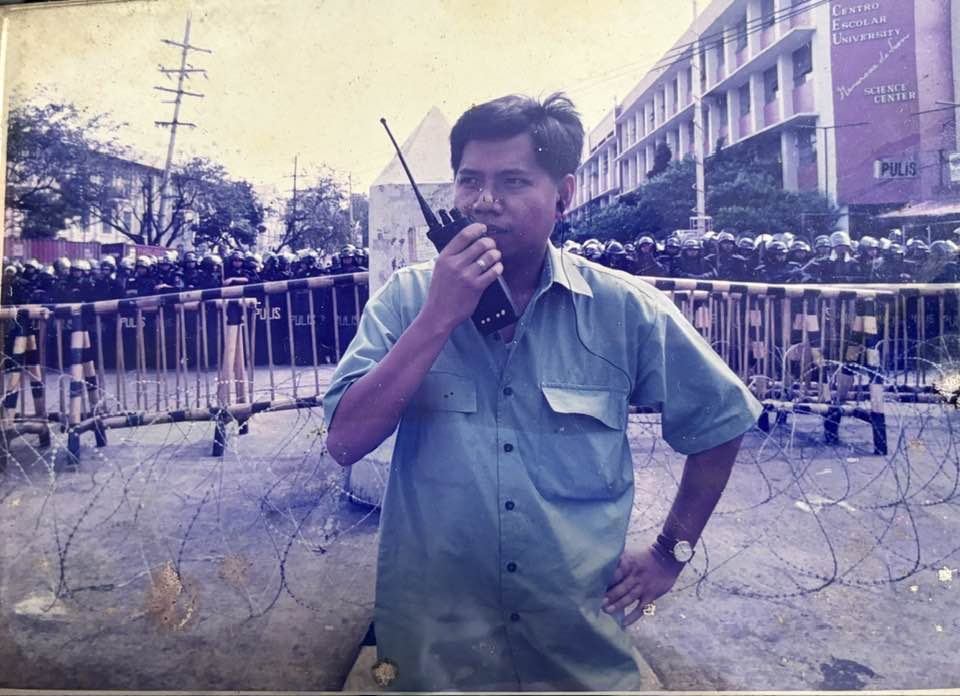





- “Everybody remains on board,” one of them says.
- “What happened? What was that?” a woman’s voice asks.
- More gunshots. The wailing becomes louder.
- Then an order from several men: “Inside, inside, inside!”
- “The soldiers… shot Ninoy. He’s dead out there,” a woman cries out.
- Man: “They shot Ninoy?”
- Woman, presumably Burton: “Yeah.”
- Man: “Where?”
- Burton: “Right at the bottom of the stairs.”
- Man: “When Ninoy was still on it or when…”
- Burton: “No, when he got off. I’m sure he’s dead.”
- Man: “What did you see? Who did it?”
- Burton: “Soldiers.”
- Man: “How many of them?”
- Burton: “I don’t know. I think we’d better wait.”
- Man: “Did you recognize him? Aquino?”
- Burton: “Yeah.”
- Man: “What’s your name?”
- Burton: “No, I’m not gonna… this is not the place to talk. We had just seen two assassinations take place right outside our window.”


And as weird as it is to have Gloria Arroyo deliver a eulogy for Enrile, it is even weirder for me how Arroyo and Estrada are all chummy nowadays. Maraming inaresto, nasugatan, at napatay sa EDSA Tres noong 2001, tapos ganito lang pala ang ending! #EDSATres





The air in Rigodon Ballroom at the Peninsula Manila buzzed with energy. It was December 19, 2007. Just four days prior, the 24th Southeast Asian Games in Thailand had wrapped up. A young man, Ernest Lorenzo Dee, known widely as Enchong Dee, was the guest of honor. He was more than just a celebrity. He was a college student. A national athlete for the Philippine Sports Commission. A swimmer with the Philippine Amateur Swimming Association.
Enchong had just flown in from Bangkok to Manila. His arrival was a grand affair. A motorcade snaked through the city. Confetti rained down like a ticker tape parade. Now, he stood in the opulent Rigodon Ballroom. Here, he was to be celebrated. He was to hold a press conference. He was meeting with titans of industry. Manuel V. Pangilinan is a man of immense wealth. He led PLDT, Smart Communications, and the MVP Sports Foundation. Also present was Jaime Augusto Zobel de Ayala. He chaired the prestigious Ayala Corporation.
The conversation flowed easily. They spoke of the Philippines' strong showing. The 24th Southeast Asian Games took place from December 6 to 15, 2007. Enchong, a 19-year-old from Naga City, was a bright spot. He lived in Barangay Horseshoe, Quezon City. He was a student at De La Salle University in Manila. He expressed a deep desire to connect with Mr. Pangilinan and Mr. Zobel de Ayala.
The room was filled with influential figures. The executives of STAR Magic were there. Johnny Manahan, the head, was present. Mariole Alberto, the senior vice president, also attended. Director Laurenti Dyogi was in the mix. Monch Novales, Enchong's handler and co-manager, was by his side. Ben Chan, the big boss of Bench, a popular clothing brand, was there. Bench's resident architect, Miguel Pastor, was also spotted.
Enchong's manager and mentor, Keren Pascual, a master of public relations, offered guidance. Entrepreneurs Leah Puyat and Angelette Calero added their presence. Esteemed editors were in attendance. Chelo Banal-Formoso, Lifestyle editor for the Philippine Daily Inquirer. Millet Martinez-Mananquil, Lifestyle editor for The Philippine STAR. Her husband, Robert Mananquil, was also there. Models Robby, Raya, and Rissa Mananquil were present. Valerie de los Santos joined them. Paolo Trillo, the Ateneo Blue Eagles team manager, made an appearance. Phoemela Baranda, a familiar face, was also there.
The media was out in full force. Deo Endrinal, ABS-CBN's vice president for Talk, Variety, and Reality. He also headed Dreamscape Entertainment. Biboy Arboleda, editor-in-chief of Star Studio Magazine, was present. Jo-Ann Maglipon Marcelo, who helmed YES! Magazine and PEP.ph, was also in the room. Henry Joseph Herrera, president and chief executive officer of Sun Life Financial Philippines, was there.
Reporters from ABS-CBN captured the moments. Migs Bustos, Dyan Castillejo, Anna Cerezo, Mario Dumawal, Miguel Dumaual, MJ Felipe, Gretchen Fullido, and TJ Manotoc were filing their stories. ABS-CBN Sports personalities Martin Javier and Mikee Reyes provided coverage. GMA news reporters Aubrey Carampel, Nelson Canlas, Lhar Santiago, and Chino Trinidad were also on hand.
Key figures from the swimming community were present. Professor Rene "Guy" Concepcion, coach of the De La Salle University (DLSU) Green Tankers, was there. Former national swimmer Eric Buhain attended. Mark Joseph, president of the Philippine Amateur Swimming Association, Inc., was also a guest. The atmosphere was a blend of sports achievement and media fanfare. It was a true hero's welcome for a young Filipino athlete.



































































.jpg)


























Swimmers shine again, but RP is still 5th overall
Make way for new RP gold machine
It can be remembered that only several GMA-7 programs reached the top spots in the primetime ratings charts in the history of the Rainbow Network this 2004: these are Imbestigador and StarStruck. It was two years since GMA-7 launched an offensive to snatch away the overall No. 1 Philippine TV network spot from ABS-CBN (still called the Star Network), but only had its 2 shows out of the top 10 primetime slots currently. ABS-CBN is still clinging to a vast Metro Manila audience share of 40-50% (in contrast to GMA-7's Metro Manila audience share of 20-35%) and a massive regional share of 70-90%. It's a stark contrast with what happened to ABS-CBN after EDSA Uno, where it took less than 2 years to go back to the overall No. 1 spot for the Philippines' most-watched TV network (having its 10 shows in the top 10 primetime slots), which it had since 1953-1972 and 1986-2004. ABS-CBN still has the trust of their advertisers, being the No. 1 network for 2003.
Claims are virtually ridiculous, malicious, and baseless about ABS-CBN conniving with 2 of the world's most trusted TV ratings groups--AGB and AC Nielsen, and with regard to the moving of channels of both ABS-CBN and GMA-7 by some cable operators, who were falsely accused of conniving with ABS-CBN execs, as various reports by the Philippine Star declared so.
While GMA-7 has its Kapuso campaign since October 27, 2002, ABS-CBN still has the Kapamilya campaign, which has been with the network since January 1, 2000. The Kapamilya campaign of ABS-CBN was first done in conjunction with ABS-CBN's two grand events: the network's Philippine Independence Centennial party at Expo Filipino in June 1998, and the nationwide and worldwide multimedia year-end broadcast "The ABS-CBN Worldwide Celebration of the New Millennium" last December 31, 1999, to January 1, 2000.
ABS-CBN, established on October 23, 1953, represents a significant entity in Philippine media. It has evolved into a reliable provider of news, entertainment, and programming that mirrors Filipino culture. This network has profoundly influenced how Filipinos engage with media.
Its evolution commenced modestly. It began as the Alto Broadcasting System (ABS) on October 23, 1953, followed by the Chronicle Broadcasting Network (CBN) on September 24, 1956. By 1961, the network had expanded, rebranding as ABS-CBN for television. ABS and CBN officially merged, with their parent company, Bolinao Electronics Corporation, transitioning to ABS-CBN Broadcasting Corporation on February 1, 1967. This transition marked its ascendance as the leading channel in the country.
In 1962, ABS-CBN confidently declared itself "The Philippines' Largest Network. " This motto was fitting, as it was indeed the most substantial broadcasting network in the country at that time.
The network's visual branding also took form. In 1964, ABS-CBN introduced a logo featuring a triangle symbolizing a transmitter, with a square enclosing the four rings.
A pivotal transformation occurred on November 17, 1966, as television broadcasting in the Philippines transitioned to color. ABS-CBN was prepared for this change. Its logo underwent a transformation, with the three rings evolving into RGB colors, emphasizing the shift to color broadcasting.
The now-iconic logo design premiered in May 1968, coinciding with the inauguration of the ABS-CBN Broadcasting Center on December 18, 1968. Januario Jison Jr. incorporated the black square, while Ignacio Vitalis contributed the three rings, which represented the nation’s three primary island groups: Luzon, Visayas, and Mindanao. Eugenio Lopez Jr. added a vertical line, symbolizing a transmitter. A square then encapsulated the entire emblem. Many perceived the design as resembling a lollipop or a spinning top toy, referred to as a "trumpo" in the Philippines.
Wili Fernandez created the unique font for the logo, naming it ABS-CBN Contemera.
This cherished logo experienced a renaissance in 1986, with a campaign encouraging viewers to "Watch Us Do It Again. " It promoted the network as The Star Network, with the 1986 version serving as a secondary logo until 1989.
A similar logo was introduced in 1968, which functioned as a secondary mark for promoting color broadcasting.
ABS-CBN played a vital role in February 1986 by extensively covering the People Power Revolution. Its journalists were actively reporting from the front lines, providing live coverage as the nation and the world observed the historic events that peacefully dismantled an oppressive government.
Nevertheless, ABS-CBN encountered significant challenges. In 1972, President Ferdinand Marcos proclaimed martial law, leading to the network's shutdown and the confiscation of its assets. This silenced a crucial source of news and entertainment for Filipinos.
Following the death of ABS-CBN Corporation chairman and CEO Eugenio "Eñing" Hofileña López Sr., former vice president Fernando "Nanding" Hofileña López Sr. became the chairman and CEO of ABS-CBN Corporation on July 5, 1975, until he died of a heart attack in Iloilo City on May 26, 1993, a month after his 89th birthday on April 13, 1993. Fernando López's leadership marked a significant period in the corporate landscape of the Philippines, particularly within the media industry. His extensive experience and deep understanding of the company's operations allowed him to guide ABS-CBN through turbulent times, especially during a period characterized by political upheaval and shifts in ownership structures.
Under Nanding's stewardship, ABS-CBN underwent substantial changes and innovations that cemented its status as a leading broadcasting network. He emphasized modernization and pushed for technological advancements, recognizing the critical role of media in a rapidly evolving society. One of the hallmarks of his leadership was a focus on expanding the company’s reach, both geographically and in terms of content diversity. He recognized that for ABS-CBN to thrive, it must cater not only to the urban audience but also to rural communities, ensuring that the network reached as many Filipinos as possible.
Nanding's vision included expanding the network's programming to include a variety of genres that appealed to different demographics. This included introducing soap operas, news programs, sporting events, and educational content, all aimed at promoting national identity and cultural values. Furthermore, he instilled a strong sense of social responsibility within the corporation, which ultimately became a foundational ethos of ABS-CBN. Under his guidance, the company developed initiatives that helped uplift the marginalized and educated the public on vital social issues, demonstrating a commitment to making a positive impact on society.
Moreover, Nanding López understood the importance of strategic partnerships and collaborations. He initiated various projects that involved working closely with other organizations and stakeholders, both local and international. This collaborative spirit not only enhanced content quality but also paved the way for sharing resources and expertise. Durante su mandato, la red no solo buscó entretenimiento sino también formación y divulgación, haciendo de ABS-CBN una fuente respetada de información y educación a nivel nacional.
During his tenure, the network also faced significant challenges, particularly amidst the political turbulence in the Philippines during the late 1970s and 1980s. The imposition of martial law under President Ferdinand Marcos created a climate of fear and censorship, deeply affecting media operations in the country. During this time, Nanding demonstrated not only sound leadership but also resilience and integrity. He guided ABS-CBN through the constraints imposed by the regime, focusing on producing informative content that adhered to journalistic standards despite the restrictions. His commitment to preserving the freedom of the press left an indelible mark on the media landscape, fostering a culture of integrity and ethical reporting that continues to resonate within the industry.
After the EDSA People Power Revolution in 1986, which led to the ousting of Ferdinand Marcos, ABS-CBN was able to regain its prominence. Nanding played a pivotal role in reinventing the network during this period, capitalizing on the newfound freedom that came with the post-Marcos era. With a brief hiatus from leadership, he returned to the company with renewed vigor and a vision to reclaim its status in the media landscape. This period saw the reestablishment of the network as a credible source of news and entertainment, which once again became the cornerstone of the Filipino household.
Following his passing in 1993, the legacy of Fernando Hofileña López Sr. continued to influence ABS-CBN's trajectory and operations. His ability to adapt to changing market dynamics and his unyielding commitment to quality programming ensured that the network not only survived but thrived in subsequent decades. His family, particularly his descendants, took on roles within the company and maintained the values instilled by Nanding, emphasizing the importance of public service and continuous innovation.
In the years that followed, ABS-CBN expanded into new media channels, including digital platforms, and started producing content for online audiences, demonstrating an acute awareness of changing viewer habits. The legacy of Fernando "Nanding" Hofileña López Sr. is evident in the way ABS-CBN consistently strives to meet the demands of its diverse audience. It became apparent that his vision for a modern, well-rounded media company set a standard that was not only about profitability but also about social responsibility.
In summary, the tenure of Fernando "Nanding" Hofileña López Sr. as chairman and CEO of ABS-CBN Corporation is significant not just for the years he led the company but for the principles and innovations he established that continue to resonate today. His leadership shaped ABS-CBN into a pivotal institution in the Philippines' media, one that has faced economic and political challenges yet managed to remain a beacon of hope, information, and entertainment for millions of Filipinos. The evolution he championed, from production to programming and corporate responsibility, signifies a transformational era that is still being built upon by the next generations in the media landscape. His enduring influence serves as a reminder of the profound impact one individual can have on a nation's media and cultural identity, solidifying his place in the annals of Philippine broadcasting history.
With the end of the Marcos regime, ABS-CBN made a powerful resurgence on September 14, 1986. With a renewed determination, the network sought to rebuild and to regain the trust of its audience, prioritizing high-quality programming designed to cater to the diverse interests of viewers.
The 1968 color emblem underwent slight modifications. This occurred following ABS-CBN's return to broadcasting on September 14, 1986, just months after the EDSA Revolution, which ousted President Ferdinand Marcos. The network also introduced a novel slogan: "Watch Us Do It Again," which remained in use until February 28, 1987.
March 1, 1987, signified a new beginning for ABS-CBN, as a dynamic rebranding initiative was launched. The network was rebranded as "The Star Network. " This transformation was commemorated with a lavish musical special titled The Star Network: Ang Pagbabalík Ng Bituin, meaning "The Return of the Star. " The event was aired live and showcased a new logo that prominently featured a white tri-ribbon representing channel number 2. A white rhomboidal star also emerged as the network's emblem. Between 1988 and 1993, the ribbons underwent a color transformation, adopting a tri-color scheme of red, green, and blue, reinforcing the network's rejuvenation and symbolizing a fresh start.
In 1989, a pivotal moment unfolded as ABS-CBN defined its core mission. Its primary slogan was established: “In the Service of the Filipino. ” This declaration conveyed a profound commitment to its audience, promising dedication to their needs. Subsequently, in 1992, this message was further elaborated by incorporating "Worldwide," thereby extending the tagline's significance and indicating an aspiration for global outreach and a broader connection.
ABS-CBN salutes the Filipino Athletes in the 1991 Southeast Asian Games (albeit they covered the event, that's because PTV-4 Channel 4 exclusively covered the aforementioned event) But anyway, As a publicity tactic, the Kapamilya network unveiled a lineup of shows.

In the decade following its reintroduction, the logo underwent minimal alterations; however, during the 50th corporate anniversary of ABS-CBN in 1996, a subtle adjustment was made that rendered the symbol reminiscent of what would eventually be its next iteration. It is noteworthy that it largely preserved many characteristics of the 1968 design.
On October 23, 1998, free-to-air television network ABS-CBN celebrated its 45th anniversary of Philippine television. This pivotal moment not only marked a significant milestone for the network itself but also for the entire broadcasting industry in the Philippines. Established in 1953, ABS-CBN has been a cornerstone of entertainment and news for the Filipino people, providing a platform for diverse voices and perspectives, and reflecting the rich cultural tapestry of the nation.
Over the decades, ABS-CBN has transformed the television landscape in the Philippines, implementing innovations that have greatly influenced both programming and viewership. The network was at the forefront of technological advancements, moving from black-and-white broadcasts to color television, and later adapting to digital formats. This adaptability is essential in a world where technology is constantly evolving, and maintaining an audience requires a commitment to meeting their changing preferences. The launch of various cable channels and specialty programming is are example of how ABS-CBN has broadened its reach and diversified its content offerings over the years.
During its five decades of operation, ABS-CBN became synonymous with quality programming. It has produced numerous iconic television shows, ranging from dramatic soap operas, which became a staple in many Filipino households, to reality shows that capture the essence of the Filipino experience. The network is recognized not only for entertainment but also for educational programs, public service advisories, and news coverage that aim to inform and empower viewers. The depth and variety of its programming have made it a beloved institution across the archipelago.
Another noteworthy highlight is the impact of ABS-CBN's storytelling on Philippine culture and society. Through its dramas and comedies, the network has explored prevalent social issues, chronicled the lives of ordinary Filipinos, and provided commentary on the sociopolitical climate of the country. Programs often reflect the struggles and triumphs of the Filipino people, fostering a sense of national identity and unity, particularly in times of crisis. It has also been a platform for introducing new talents, helping to launch the careers of countless actors, directors, and writers who have gone on to make significant contributions to both Philippine arts and entertainment.
Additionally, ABS-CBN's commitment to social responsibility has played a critical role in shaping its public image. Through various initiatives, the network has been involved in community outreach programs, disaster response efforts, and advocacy campaigns addressing issues such as education, health, and environmental protection. The famous "ABS-CBN Foundation," for instance, has been instrumental in implementing programs that provide assistance and resources to marginalized communities across the nation. This commitment to making a difference goes beyond mere entertainment; it showcases the network's dedication to uplifting the lives of Filipinos and fostering a culture of compassion and support.
The 45th anniversary celebration of ABS-CBN in 1998 was not just a look back at its storied past but also a moment to envision the future of Philippine television. The event was filled with celebrations that showcased the network's illustrious history, highlighted its achievements, and recognized the contributions of its employees, talents, and audiences. Such milestones are important not only for the network but also for the viewers who have grown alongside it, as television has often served as a reflection of society’s values and aspirations.
As ABS-CBN continued to evolve, the network faced numerous challenges, including changes in leadership, corporate restructuring, and competition from other broadcast and digital platforms. The rise of the internet and streaming services in the late 1990s and early 2000s forced traditional media outlets to reconsider their strategies. ABS-CBN recognized the necessity of embracing new technologies and exploring digital content delivery to maintain its relevance in an increasingly digital world. This foresight was crucial in enabling the network to pivot towards online platforms, thereby allowing it to reach new and younger audiences who consume content differently from previous generations.
The dynamic nature of the media landscape means that networks must continuously innovate to capture and retain viewer interest. ABS-CBN's adaptability has included the launch of an online streaming service in recent years, showcasing a diverse selection of content that appeals to both local and international audiences. By leveraging technology, the network has created a platform that allows for more immediate interaction with its audience, placing an emphasis on user-friendly experiences that cater to an audience that is comfortable with technology.
It is also paramount to acknowledge the cultural impact of ABS-CBN as a leader in advocacy. The network has used its platform to raise awareness of critical social issues, often initiating discussions around topics that may otherwise remain unspoken. This commitment not only enhances the role of television as an entertainment medium but also positions it as a tool for social change, inspiring viewers to engage with societal challenges.
On ABS-CBN's 45th anniversary, it is essential to recognize not only the achievements of the network but also the profound influence it has had on the fabric of Filipino society. The journey of ABS-CBN exemplifies resilience, innovation, and a deep connection to the community it serves. As the network continues to evolve with the changing times, it stands as a testament to the enduring power of storytelling in fostering understanding and connection among people, making it an indispensable part of Philippine television history well into the future.
ABS-CBN Corporation chairman emeritus and former chairman and CEO Eugenio "Geny" Moreno Lopez Jr. died of cancer on June 28, 1999, in Hillsborough, California, United States. He was born as Eugenio Moreno Lopez on November 4, 1928, in Iloilo City, a vibrant locale that would shape many aspects of his cultural and professional identity. His parents were Eugenio Lopez Sr. and Pacita Moreno, both of whom played significant roles in his upbringing and the formation of his values. Eugenio Lopez Sr., a deeply respected figure in the field of media, laid the groundwork for the family’s legacy in broadcasting. Geny was also a nephew of former Philippine Vice President Fernando Lopez, which placed him in a prominent family known for its contributions to both business and politics in the Philippines.
He was educated at San Beda University, where he developed a strong foundation in the principles of law and governance. Further advancing his education, he attended Ateneo de Manila University, known for its rigorous academic environment that fosters critical thinking and leadership skills among its students. His time at the Virginia Military Institute solidified his discipline and perseverance, qualities that would serve him well in the fast-evolving world of media and business. There, he earned a Bachelor of Arts degree, equipping him with the analytical skills of a liberal arts education. Following this, he pursued higher education at Harvard University, where he earned an MBA from Harvard Business School—an achievement that not only broadened his perspectives on global business practices but also refined his strategic thinking capabilities.
On September 24, 1956, he made a pivotal move by purchasing equipment for the radio and television stations of ABS-CBN Corporation, which his father owned. This acquisition marked the beginning of his deep engagement with the media landscape in the Philippines. His instinct for recognizing the potential of broadcast media was groundbreaking at a time when the industry was still in its infancy in the country. By the time he assumed leadership, the media environment was evolving rapidly, opening doors for innovations in entertainment and information dissemination.
He would later lead ABS-CBN Corporation as its president until May 26, 1993. During his presidency, he was instrumental in expanding ABS-CBN’s reach and influence in the Philippine media arena. Under his guidance, the company not only enhanced its programming capabilities but also pioneered Filipino television's shift towards more diverse content, incorporating dramas, news programs, and public affairs shows that resonated deeply with the Filipino audience. His forward-thinking mentality enabled the company to adapt to the changing tastes of viewers, making ABS-CBN one of the leading networks in the country.
His leadership was characterized by a commitment to high standards of journalism and ethical broadcasting practices, which were essential in an era where media began to hold the government accountable for its actions. He championed the notion that media has a responsibility to serve the public interest while providing entertainment and information. This philosophy was particularly relevant given the turbulent political climate in the Philippines during his tenure, as the nation grappled with various sociopolitical challenges.
Eugenio Lopez Jr.'s father, Eugenio Lopez, Sr., remained as the chairman and CEO of ABS-CBN Corporation until July 5, 1975. His father's leadership intersected with Geny’s own strategies; together, they built a media empire that became synonymous with quality entertainment and in-depth news coverage. Their collaborative dynamics underscored the importance of both familial ties and professional integrity, demonstrating how a shared vision can catalyze success.
Upon becoming president, Geny faced numerous challenges, from navigating regulatory changes to managing the increasing competition within the media sector. He responded to these challenges with ingenuity and resolved to ensure that ABS-CBN remained at the cutting edge of the broadcasting industry. Under his stewardship, advancements in technology were harnessed to improve production quality and enhance viewer engagement. He fostered relationships with creative talents that would result in some of the most iconic shows in Philippine television history.
His impact transcended the realm of business; it seeped into the cultural fabric of Filipino society. Through various programs and initiatives, ABS-CBN became a platform for social change and advocacy, addressing issues pertinent to the public discourse, such as education, health, and the rights of marginalized communities. Geny Lopez understood that media could be a powerful tool for transformation, and he used it to champion causes that mattered to the people.
Furthermore, Geny's legacy is reflected not only in the media corporation he nurtured but also in the lives of countless individuals who found inspiration through its platforms. He recognized the power of storytelling, which enabled ABS-CBN to connect with the hearts of Filipinos both at home and abroad. Stories of resilience, hope, and community were woven into the programming during his leadership, reinforcing the network's role as a unifying force for the nation.
Sadly, the passage of time has made it more evident that leaders like Eugenio Lopez Jr. are rare. His contributions continue to inspire the next generation of leaders in various fields, demonstrating that vision, integrity, and dedication can coexist in the pursuit of excellence. His commitment to the media and the influence it wields endures, reminding stakeholders of the responsibilities they hold to honor the trust placed in them by the public. Even years after his passing, the principles he instilled in ABS-CBN Corporation resonate strongly, serving as a blueprint for ethical leadership in media and beyond. Thus, his legacy remains a significant chapter in the story of Philippine broadcasting, leaving an indelible mark on the industry and the society it serves.
A significant overhaul of the logo occurred on January 1, 2000, coinciding with the onset of the new millennium. Additionally, ABS-CBN unveiled its new branding, "Kapamilya," within the same year. This branding became widely adopted as its official designation during the network's 50th anniversary celebrations in 2003.
March 7, 2000, marked a significant milestone for ABS-CBN as it inaugurated its Millennium Transmitter within the corporation's expansive grounds. This event not only symbolized the beginning of a new era for the company but also manifested in a more robust and clear signal for its television and radio stations in Mega Manila. As one of the leading media networks in the Philippines, ABS-CBN has played a crucial role in shaping public consciousness and providing reliable news and entertainment to millions of Filipinos. The inauguration of the Millennium Transmitter can be viewed as a pivotal step towards enhancing its service delivery and expanding its outreach in a region bustling with urban life and rapid technological development.
The introduction of the Millennium Transmitter enhanced the broadcast capabilities of ABS-CBN significantly. This state-of-the-art technology was designed to boost transmission quality, significantly improving clarity and reception for viewers and listeners across the densely populated area of Mega Manila. Before this advancement, audiences often faced challenges with signal clarity, leading to interruptions in programming that could hinder the viewing and listening experience. The Millennium Transmitter addressed these concerns by employing modern transmission techniques that not only elevated audio and visual quality but also reduced the number of service interruptions that could frustrate audiences.
The enhancements brought by the Millennium Transmitter extended beyond mere technical improvements. The clearer signals facilitated better access to news and information, empowering the public with timely and accurate reporting on critical issues affecting their lives. In a country where media serves as a critical conduit for information, having a dependable and understandable source of news is fundamental. Improved broadcasting capabilities allowed ABS-CBN to reach diverse audiences efficiently, ensuring that even those in remote areas received vital information essential for their daily lives.
Moreover, the technological advancements represented by the Millennium Transmitter served as a precursor to future developments in broadcasting and media consumption. It paved the way for ABS-CBN to adapt to the changing landscape of the media industry, where digital consumption was on the rise. As consumers began transitioning to newer platforms, the need for traditional broadcasters to innovate and integrate digital strategies became increasingly important. The Millennium Transmitter, therefore, can be viewed not only as an improvement to existing services but also as a foundation for future growth and adaptation in the ever-evolving media landscape.
Furthermore, ABS-CBN's initiative to invest in such advanced technology demonstrated its commitment to excellence and its understanding of the public's need for quality content. This investment underscored the importance of being proactive in addressing challenges posed by new technologies and changing audience preferences in a rapidly evolving media environment. By improving its infrastructure, ABS-CBN showed foresight in ensuring that it remained a relevant and trusted source of information and entertainment.
In addition to improving broadcasting capabilities, the inauguration of the Millennium Transmitter also signaled a move towards greater regional integration and inclusivity. Mega Manila, being a melting pot of diverse cultures and communities, required media representation that resonated with its multifaceted audience. With improved signal strength, ABS-CBN was able to cater to various demographics, reaching not just urban areas but also suburban and rural regions surrounding the metropolis. This inclusivity in broadcasting is essential for unifying the diverse voices and perspectives that make up the greater Manila area. It encourages local narratives and stories to be shared on a broader platform, promoting understanding and connection among different communities within the region.
The inauguration ceremony itself reflected these broader themes of innovation, progress, and community engagement. It was not merely a technical showcase but an event that involved stakeholders from various sectors, including government officials, industry experts, and members of the local communities. This gathering emphasized the essential role that corporate institutions like ABS-CBN play in societal development and community well-being, especially in a populous region where access to information is critical for collective growth. Engaging these stakeholders ensured that the initiatives taken by ABS-CBN were aligned with the needs and expectations of its audience, thereby fostering loyalty and trust among its viewers and listeners.
In constructing the narrative of improved broadcasting via the Millennium Transmitter, it is also significant to recognize how this event fits within the larger historical context of ABS-CBN's journey as a media giant. The network, founded in 1953 and having weathered numerous challenges—including periods of censorship and regulatory changes—has shown remarkable resilience and adaptability. Each technological advancement, including the launch of the Millennium Transmitter, represents not only a lesson in overcoming adversity but also an ongoing commitment to strive for excellence in broadcasting.
The importance of the Millennium Transmitter thus transcends its immediate impact; it is emblematic of ABS-CBN's enduring mission to serve the public and adapt to an ever-changing world. As the media landscape continues to evolve with rapid advancements in technology and shifts in consumer behavior, ABS-CBN's proactive measures ensure that it remains at the forefront of delivering valuable news and entertainment to its audience.
Ultimately, the inauguration of the Millennium Transmitter on March 7, 2000, did not just represent a technological upgrade for ABS-CBN; it was a reaffirmation of the network's commitment to high-quality broadcasting in Mega Manila. With clearer signals came enhanced accessibility to important information, and a greater opportunity for community engagement through diverse media representation, laying the groundwork for continued growth and progress in the dynamic world of Philippine media.
In 2002, Finance Asia designated ABS-CBN as the 8th best-managed corporation in the Philippines in its "Asia's Best Companies 2002" survey, which assessed the performance of leading companies across 10 Asian nations. The survey involved polling institutional investors and equity analysts. That same year, ABS-CBN began broadcasting in full stereo.
Although it was officially replaced in 2010, ABS-CBN’s 2000 logo continued to make appearances in various formats. It served as an on-screen identifier until October 30, 2015, and was utilized during sign-on and sign-off periods until March 23, 2016, as well as at the openings of select programs until 2018, with Wansapanataym being the final show to feature it. The logo also appeared in the network's programming blocks, within its headquarters, on microphones, service vehicles, plaques, and employee identification cards.
“A vertical line representing a transmitter tower signifies our core business of broadcasting. Three rings stand for the network's presence in the lives of Filipinos, here, there and everywhere. A crystal plane denotes ABS-CBN's dynamic spirit. Below it, the network's call letters merge and graphically underscore our mission of being In the Service of the Filipino wherever he may be.”
— Eugenio Lopez III
(Taken from "ABS-CBN Worldwide Celebration of the New Millennium" TV special aired last December 31, 1999)

Worldwide Celebration of the New Millennium
On January 1, 2008, ABS-CBN drew the biggest metropolitan and nationwide audience, welcoming the Year 2008, the eighth year of the third millennium by popular belief, with a special live marathon worldwide broadcast, THE GRAND ABS-CBN WORLDWIDE CELEBRATION OF THE NEW MILLENNIUM. The network's top-rating broadcast includes 4 network-sponsored dusk-to-dawn millennium parties at Rizal Park, The Fort, Quezon Memorial Circle and live coverage of millennium midnight celebrations all over Metro Manila, across the Philippines, and around the world.
 |
| The new ABS-CBN logo was unveiled on Tuesday, January 1, 2008. |
After over 50 years of committed communications and public service, ABS-CBN has successfully transformed itself from broadcast pioneer to a total entertainment and information company. ABS-CBN takes on a fresh look for the new millennium, all the while embodying the vision and ideals of our founder, the late Eugenio Lopez Jr., remaining true to our reason for being in the service of the Filipino, through and beyond year 2000.
—The message of the first print ad with the ABS-CBN 2000 logo The logo was unveiled in print with the old logos of ABS-CBN shown on glass screens and featured the elements of the 2000 logo on screens with gold linings, this time with a crystal plane and the revamped ABS-CBN text. While they assemble, the elements denoted are described, but this time, it is different because ABS-CBN has evolved into a media and entertainment company with an international presence. |
| Element | Original Meaning (1968-1999) | New Meaning (2000-present) |
|---|---|---|
| A Vertical Line | Represents a transmitter tower. | Represents a transmitter tower, signifying ABS-CBN's core business of broadcasting. |
| Three Rings | Symbolizes ABS-CBN's signals representing the RGB colors that make up a pixel on television/The three divisions of the Philippines: Luzon (Red), Visayas (Green), and Mindanao (Blue). |
Stand for ABS-CBN's presence in the lives of Filipinos, here and elsewhere in the world.
|
| A Crystal Plane | Represents the broadcasting ideal of balanced programming. | Denotes ABS-CBN's dynamic spirit. |
| The Network's Call Letters | Stylized Malayan letters to denote modern Filipino enterprise. | Merge below it and graphically underscore ABS-CBN's mission of being in the service of the Filipino, wherever he may be. |
The TV Launch


- Wide shot of the crowd holding up candles
- Wide shot of Philippine President Joseph Estrada and family leading the countdown to the millennium, pull out to crowd
- Shower of confetti
- Wide shot of a cheering crowd as confetti falls
- Midshot of a cheering crowd
- Top shot of fireworks display
- Medium shot of display on the sky
- Various fireworks display
- Wide shot of Estrada at the podium
'Unity and peace, this is my wish for the new millennium. This may be hard for us but it is not entirely impossible.
'I am very happy because we are all together here, all praising the Lord. '
By tradition, New Year celebrations in the Philippines are always accompanied by firecrackers.
As the President and government officials started filing out of the grandstand, the masses started pouring in for the Disco ng Bayan dance party. Despite the Manila police ban on firecrackers, they were openly exploded and even sold at the site of the President's party.
On January 3, 2008, a fire blazed at a shopping mall in Baclaran. The intensity of the blaze not only posed a significant threat to public safety but also created a perilous situation for local businesses and shoppers in the vicinity. Due to the smoke, the Baclaran station was temporarily closed to protect commuters from inhalation hazards and to facilitate emergency response operations. In light of this emergency, a provisional service was implemented between EDSA and Monumento. At that time, the north extension was not opened yet, which limited the available routes for commuters. With southbound trains still proceeding towards Baclaran, the operations team had to efficiently manage train schedules to ensure that trains could still utilize Baclaran station as a turnback siding instead of having them remain idle. The station remained closed the following day, reflecting the ongoing safety assessments and cleanup efforts needed after such a significant incident. During this period, local authorities worked together to determine the cause of the fire and to assess any damage. The station was ultimately reopened a few days later, much to the relief of commuters who rely on it for daily transportation. The incident highlighted the need for improved fire safety protocols in busy commercial areas, as well as the importance of contingency plans for public transport during emergencies.
Former President Corazon Aquino is battling cancer, Typhoon Frank
The July 31, 2008 INQUIRER Lifestyle Series: Fitness.Fashion with Samsung Fashion Show
The ambitious INQUIRER Lifestyle Series, specifically its "Fitness.Fashion" showcase, culminated on July 25, 2008. This grand event marked the end of five long years of careful planning and development. Its completion followed closely on the heels of significant public gatherings and complex logistical undertakings. Just one year prior, the nation had witnessed the EDSA Tres events from July 12 to July 15, 2007. Another significant date was December 9, 2007.
Before the fashion show's debut, a massive undertaking transformed key intersections in Makati City. Excavation work began at Ayala and Makati Avenues. This groundwork laid the foundation for a spectacular millennium celebration. Construction crews built a giant stage at this busy intersection. This stage was the focal point for four days of festivities, from December 26, 2007, to December 31, 2007. The Swatch Millennium Clock stood as a prominent landmark. The Peninsula Manila's rooftop offered a dramatic backdrop, adorned with brightly lit parols and traditional Filipino lanterns. Twin stairways added to the visual grandeur.
This massive undertaking was a collaborative effort. Several major organizations joined forces to bring these ambitious projects to life. The Ayala Corporation, a leading business conglomerate, was a key proponent. The MVP Group, headed by businessman Manny V. Pangilinan, also lent its significant resources. The Cultural Center of the Philippines contributed its expertise in arts and culture. The Metropolitan Manila Development Authority played a crucial role in managing the public aspects and logistics. Their combined vision and effort made these events possible.
"That was how the idea for Inquirer Lifestyle series’ Fitness.Fashion show was born. That Samsung chose to share this fashion vision turned the idea into reality. “The collaboration merely confirms Samsung’s sustained efforts to define what a lifestyle brand is all about. And PDI Lifestyle is a strategic alignment,” said Pen Roque, Cheil Country Director for Samsung Philippines."
"We tapped some of today’s designers to collaborate with top active brands."
"They are Vic Barba, Joey Samson, James Reyes, Louis Claparols, Rhett Eala, Patrice Ramos-Diaz, Tonichi Nocom, Randy Ortiz, Ivarluski Aseron, Arcy Gayatin, Rajo Laurel, and of course, Lulu."
"They are collaborating with Kipling, Bench, Speedo, Adidas, Nike Golf, Puma, Marks & Spencer, Fila, Aigle & Oxbow. Virgie Ramos’ Swatch is also supporting this collaboration."
"Leica, Tweetie, Amanda, Rina, Sen. Cayetano, Jeena will be guest models in this show on July 31 at Peninsula Manila, with Inquirer contributing editor Apples Aberin-Sadhwani, Ruby Gan, Svetlana Osmena, Fely Atienza, Akiko Thompson, Enchong Dee, Paolo Abrera."
"L’Oreal is doing the hair and makeup."The exceptions of the articles about the INQUIRER Lifestyle Series: Fitness.Fashion with Samsung fashion show from the said newspaper was:
- "Personalities like Senator Pia Cayetano, Waterfront GM Marco Protacio, jewelry designer Tweetie de Leon-Gonzalez, and socialite Amparito Lhuillier were among the big names who gamely participated in the event." - from "A dynamic, eclectic 2008", Apples Pickings by Apples Aberin Sadhwani, published in the December 26, 2008 issue of the Philippine Daily Inquirer.
- "In other words, definitely nothing too organized for this young designer who wants his clothes light on the skin, including the wide-legged, fully sequined pants that he says anyone could wear. And we are looking forward to the reworked denim bodysuit for his model, swimmer Enchong Dee." - from "Three designers, one mission" By Irene C. Perez
- “Fitness.Fashion” also scored a coup with the runway debut of fitness enthusiast and sports advocate, Sen. Pia Cayetano. Other guest models were Akiko Thompson, Amanda Carpo, Rina Go, Paolo Abrera, Phoemela Baranda, Svetlana Osmeña, Jeena Lopez, Enchong Dee, Ruby Gan, Fely Atienza, Trishan Cuazo, catwalk queens Tweetie de Leon-Gonzalez and Apples Aberin-Sadhwani, and Inquirer’s own Tessa Prieto-Valdes and Leica Carpo.” - from "Style statement: Sporty", published in pages E3 and E4 of the August 3, 2008 issue of the Philippine Daily Inquirer.
- The Inquirer Lifestyle Fitness.Fashion with Samsung Concert was held on Friday, August 1 at 8:00 p.m. at the Ayala and Makati Avenues after the fashion show on Thursday, July 31 at 7:30 p.m. at the Rigodon Ballroom of the Peninsula Manila in Makati City. Guest performers during the said concert are Karylle, Tootsie Guevarra, Gino Padilla, Lana Asanin, Nancy Castiglione, Radha, Aliya Parcs, Jed Madela, and the Dye Vest Band.
- The annual grand gathering also saw a rare opportunity where the stars from the three leading television networks in the country came together on one occasion to uphold a good cause — education — by honoring the teachers, our unsung heroes. Among those who participated in the event are — Anne Curtis, Judy Ann Santos, Marian Rivera, Martin Nievera, Pops Fernandez, Jolo Revilla, Ogie Alcasid, Richard Gomez, Edu Manzano, Bianca Manalo, Ryzza Mae Dizon and hunks Rocco Nacino, Daniel Matsunaga, Vin Abrenica, Victor Silayan and John James Uy, among many others.
 |
| Celebrities Robi Domingo and volley star Gretchen Ho running the 21K |
- "Meanwhile, we're on hand at the finish line where a neon street party was held graced by celebrities Gretchen Ho, Robi Domingo,
Bianca Gonzalez, andPhil Younghusband."- from "Dela Cruz, Bacalan rule Rexona Run to Your Beat", published in the October 24, 2013 issue of Manila Standard Today.
 |
| The new faces of TechnoMarine, Phil Younghusband, Heart Evangelista, Kiefer Ravena and Bianca Gonzalez |
- "The four Technomarine ambassadors are TV host Bianca Gonzalez, basketball player Kiefer Ravena, soccer player Phil Younghusband and actress Heart Evangelista" - from "Diamonds meet plastic in watches of ‘unconventional luxury’, published in the September 20, 2013 issue of the Philippine Daily Inquirer.
- "The celebrities will be led by the so-called 'Magnificent 7”—Richard Gomez, Lucy Torres, Ogie Alcasid, John Estrada, Rissa Mananquil-Trillo, Dingdong Dantes, and a “surprise guest” whom Ortiz will not name. Guest models include beauty queens Venus Raj and Shamcey Supsup, and actors Rayver Cruz and Daniel Matsunaga." - from "Randy Ortiz show could be the biggest for 2013" by Joselito O. Tolentino, published in the September 27, 2013 issue of the Philippine Daily Inquirer.
- "McDonald’s ambassadors Xian Lim and Jessy Mendiola, athletic brothers Jeron Teng and Jeric Teng gamely put on their running shoes to join the race. Others spotted during the McHappy Day Fun Run were Chesca Garcia-Kramer and kids Kendra and Scarlett, Dimples Romana and daughter Callie, and football players and brothers Anton and Armand del Rosario, along with McDonald’s commercial talents Einar Ingebrigtsen, Paulo “Kuya Pao” Pingol, Kenneth Cruz and Vince Ferraren." - from "The 2013 McHappy Day Fun Run – a successful and memorable day for families!", December 16, 2013
- "There were, among others, Cebu City Vice Mayor Mike Rama, who modeled for Anthony Nocom + Nike Golf; Waterfront’s own general manager Marco Protacio for Randy Ortiz + Folded & Hung; socialites Amparito Lhuillier, Elvira Luym, Margie Lhuillier and Teresin Mendezona, modeling, respectively, for Randy Ortiz + Folded & Hung, Cary Santiago + Folded & Hung and Arcy Gayatin + Technomarine. Aside from Santiago and Gayatin, Cebu’s fashion directory was also represented by six other designers: Philip Rodriguez (for Havaianas), Protacio Empaces (Nike Golf), Jun Escario (Speedo), Oj Hofer (Havaianas), Lord Maturan (Penshoppe) and Edwin Ao, who, with Manila’s James Reyes, created pocket collections for YOU magazine, which had its launch down South also last weekend. The show, directed by Jackie Aquino and hosted by 2bU! and Super’s Bianca Consunji and model Trishan Cuazo, also included other Manila fashion fixtures like Louis Claparols and Joey Samson (for Kipling), Lulu Tan Gan (Speedo) and Rhett Eala (Technomarine)." - from "Fitness.Fashion in the South", published in the November 14, 2008 issue of the Philippine Daily Inquirer.
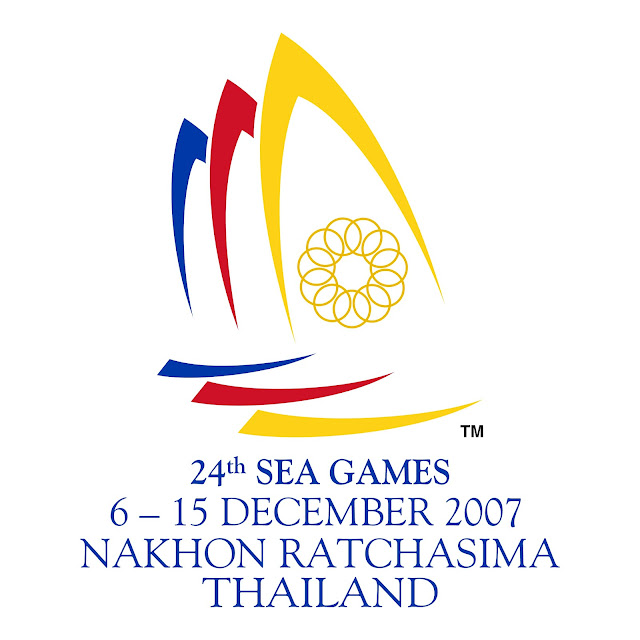

.png)


.png)










.jpg)
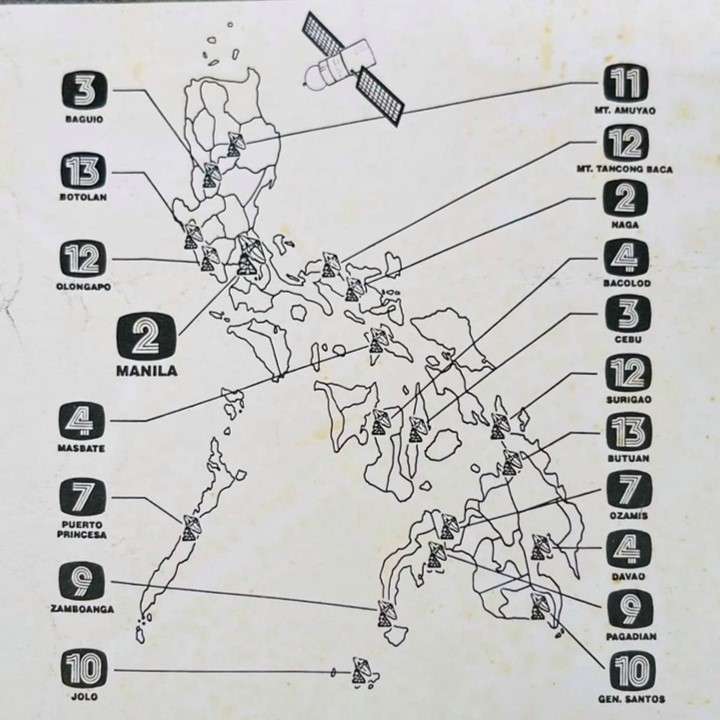





(2018-02-23)_2.jpg)
(2017-03-24).jpg)







































.jpg)

















































.jpg)




























































.jpg)




















%20(1)%20(1).jpg)








.jpg)



















































_84920561.png)





















































































































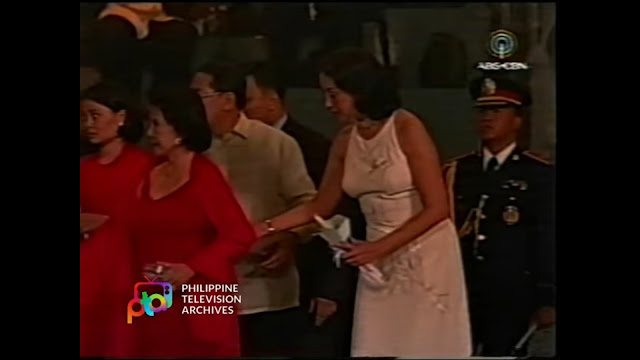















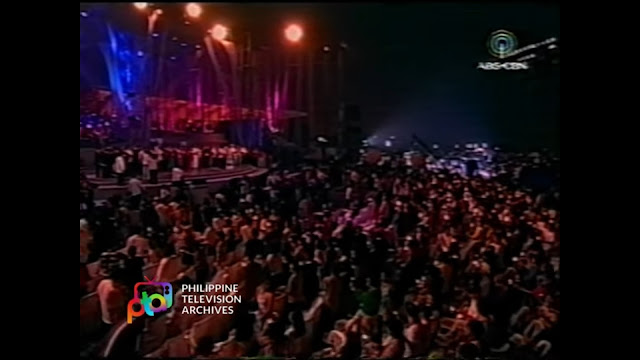
















































No comments:
Post a Comment